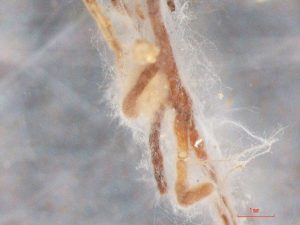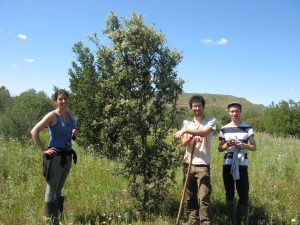The environmental disaster caused by the breakdown of the decanting basin of the Aznalcóllar mine, Seville (in 1998), left behind hectares of contaminated land. The tasks of decontamination and restoration of the ecosystem led to the establishment of a green and environmentally protected area, the Guadiamar Green Corridor. The restoration was carried out through plantations of native trees, however, the restoration of the microbial flora of the soil, a crucial component for the functioning of terrestrial ecosystems, was not included.
A research group from IRNAS, CSIC, in collaboration with the EEZ, CSIC, the University of Seville and the University of Copenhagen (Denmark) have assessed the status of the ectomycorrhizal fungi (ECM) community associated with the roots of the holm oak (Quercus ilex) in the contaminated and recovered Guadiamar soils. Ectomycorrhizal fungi form symbiotic associations mainly with trees. These fungi develop a hyphal sheath, known as the mantle, around the roots tips of trees where the exchange of nutrients (carbohydrates for nitrogen, mainly) is developed inherent in this type of symbiosis. A single tree can be colonized, at the same time, by several species of fungi. However, within the group of fungal species capable of developing this type of symbiosis, there are functional differences, both at the level of nutrient intake and exchange with the plant, and at the plant protection against trace elements contamination. These differences can be inferred, in part, from the morphology of these fungi, but few studies have been based on the characterization of individual mycorrhizal root tips to infer the effects of an environmental impact on ectomycorrhizal fungal communities.

The study has been published in the journal Soil Biology and Biochemistry:

